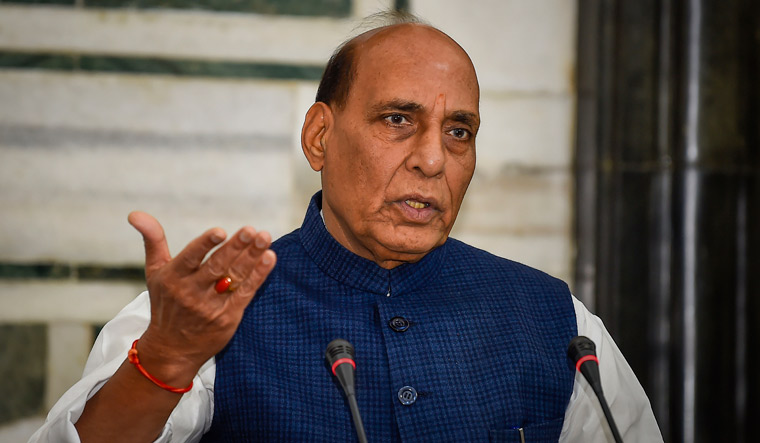In a strong message to China, Defence minister Rajnath Singh said that China should know that tensions at the LAC will affect the bilateral relations. Speaking in the Rajya Sabha, Defence minister accused China for its action as disregard of various bilateral agreements between the neighbours.
"The amassing of the troops by China goes against the 1993 and 1996 Agreements," Singh said. He also said that while our armed forces abide scrupulously by it, this has not been reciprocated by the Chinese side.
Unlike in the Lok Sabha, the defence minister also responded to opposition party members, who were given 30 seconds to a minute for comments or queries on the defence minister's address on the Ladakh situation in parliament. Singh made a suo moto statement on the issue in Lok Sabha on Tuesday.
Former Defence Minister A.K. Antony asked Singh about restoration of ‘status quo ante’ as of mid-March. He also said that Galwan was never disputed, and our armed forces used to patrol till Finger 8. The Army and ITBP should be allowed to patrol to all points, he told Singh.
"No power in the world can stop us from carrying out patrolling," Singh responded to Antony by making it clear that "Indian soldiers made PLA pay a heavy price during the clash at Galwan valley on June 15."
He accused China of saying one thing and doing completely the opposite. He said that given the growing friction along the LAC, the Senior Commanders of the two sides in a meeting on June 6 agreed on a process of disengagement that involved reciprocal actions. Both sides also agreed to respect and abide by the LAC and not undertake any activity to alter the status quo. "However, in violation of this the Chinese side created a violent face off on June 15 at Galwan," Singh said while adding that. “Our brave soldiers laid down their lives and also inflicted costs including casualties on the Chinese side."
He also stated that a case in point is that even when the discussions were going on, the Chinese side again engaged in provocative military manoeuvres on the night of August 29 and 30, “in an attempt to change the status quo in the South Bank area of Pangong Lake". But yet again, timely and firm actions by our armed forces along the LAC prevented such attempts from succeeding, the minister informed the House.
After the September 10 meeting between foreign ministers of both countries, a meeting between military commanders is being worked out to defuse the heightened tension in Eastern Ladakh. Chinese military is making desperate moves to dislodge the Indian Army from strategic heights, occupied recently. Moreover, the situation is very fluid, as three incidents of gun shots have happened between the two sides in the past fortnight, an unprecedented since 1975.
Singh informed the Upper House that while no one should doubt our determination to safeguard our borders, India believes that mutual respect and mutual sensitivity are the basis for peaceful relations with neighbours.
Refusing to divulge more in the present situation, as there are sensitive operational issues which cannot be detailed, Singh said that he hopes the House will understand the sensitivity of the matter.
"The situation this year is very different both in terms of scale of troops involved and number of friction points. We do remain committed to peaceful resolution of the current situation. At the same time, we remain prepared to deal with all contingencies," he reiterated.
Informing the Rajya Sabha, the defence minister said that China, over the last many decades, undertook significant infrastructure construction activity to enhance their deployment capabilities in the border areas. "Our govt too has stepped up the budget for border infrastructure development to about double the previous levels," he said. “More roads and bridges have been completed in the border areas, which has not only provided much needed connectivity to the local population, but has also provided better logistical support for our armed forces, enabling them to be more alert in the border areas and respond more effectively where required,” he added.
China also claims approximately 90,000 sqkm of Indian territory in the Eastern Sector of the India-China boundary in Arunachal Pradesh, Rajnath stated.
"The Chinese position, however, is that the boundary between the two countries has not been formally delimited, that there exists a traditional customary line formed by the extent of jurisdiction that they claim was exercised historically by each side, and that the two sides have different interpretations of the position of the traditional customary line. The two countries had engaged in discussions during 1950s-60s but these efforts could not yield a mutually acceptable solution," Singh said.



